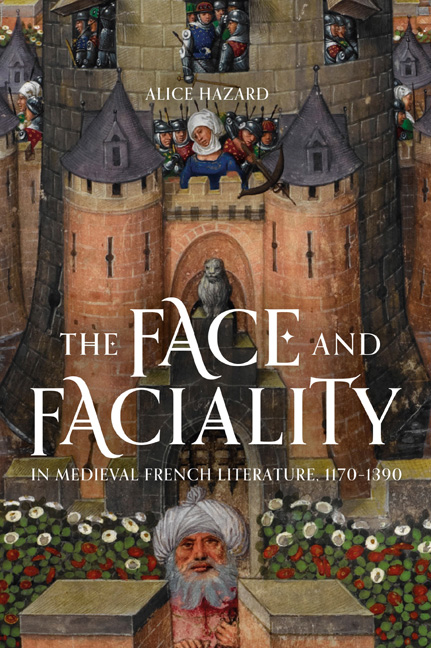Summary
This book is about faces in French literature of the High Middle Ages. Tracing a path through Arthurian verse (in its evolution from twelfth-to thirteenthcentury modes), the Roman de la Rose and the fabliaux, with an excursus into drawn faces on fourteenth-century manuscript pages, my goal has been to elucidate the different ways in which the motif of the face performs complex and sometimes apparently contradictory interiority. The founding argument of the book has been that the literature of the French Middle Ages exhibits an illusion of a prioritised interiority. On the one hand, that is, these texts operate according to a model in which an interior and an exterior exist in hierarchical relation to each other, and in which this relation is mediated by a delimiting barrier between the two. This model is broadly Structuralist inasmuch as it posits a meaning – the referent – which is accessible only through a secondary sign. The meaningful interior is primary, and is valued over and above its external expression or representation. This linguistic model is translated into and reproduced in the notion of face and of faciality (which I have been using not as a translation of Deleuze and Guattari's visagéité but as denoting the broader quality of being a face, a quality which I have attempted to unpack in the course of this book, but which remains mutable and flexible) inasmuch as the face is understood and used in these texts as both a physiological and metaphorical phenomenon in which a prioritised – in terms of both temporality and value – inner kernel is accessible via its contingent outer expression. The classic physiological examples to which I have referred are those such as rising colour as an indication of love and the correlation between physical appearance and moral character. Widening the scope of ‘face’ to include its metaphorical use (although I query this distinction throughout the book, especially in Chapter 1), we note that other surfaces appear to perform a facial function: clothes, armour, shields, parchment and even walls all mediate access to a higher meaning beyond and, in spatial terms, behind themselves, whether it take the form of a subject (as individual identity or as a collection of attributes) or, as in the latter case, a whole value system (courtly love in the Garden of Deduit).
- Type
- Chapter
- Information
- The Face and Faciality in Medieval French Literature, 1170–1390 , pp. 203 - 210Publisher: Boydell & BrewerPrint publication year: 2021



